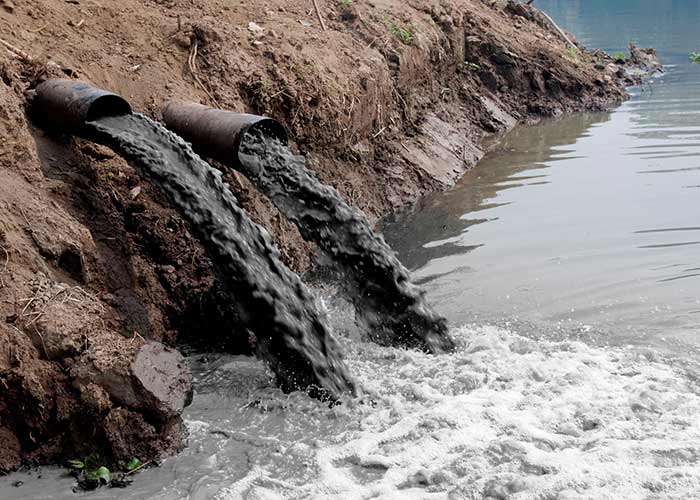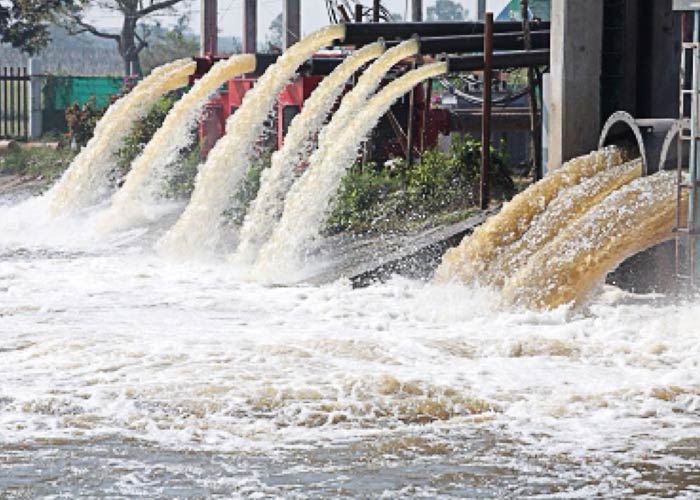Air pollution is a worldwide problem, which has raised manifold in the past few decades. Air pollution leads to devastating effects. Since the air is directly related to life on earth, people are becoming victims of various types of diseases by breathing in foul air. According to the World Health Organization (WHO), air pollution is the direct cause of the death of 2-4 lakh people every year, while 1-5 lakh of these people are killed by indoor air pollution.
A study by the University of Birmingham shows that there is a definite link between deaths due to pneumonia and deaths caused by vehicular air pollution. Deaths due to air pollution are higher in comparison to deaths due to automobile pollution worldwide every year. Published in 2005, the study says that 310,000 European die every year due to air pollution. The direct fatal causes of air pollution include asthma, bronchitis, emphysema, lungs and cardiovascular disease and respiratory allergies.
Air Pollution Effects
All this point to a very frightening global situation.
Air Pollution Effects on Human Brain
Poisonous particles of air pollution are found in human brains also. That is, air pollution is not just giving you problems related to respiration, but it is also affecting your ability to think and understand. For the first time, scientists have found in an investigation that magnetic particles produced during air pollution can also be deposited in your brain.
This study was done on people living in Mexico City and Manchester in the UK. These magnetic particles reaching your mind through polluted air are very poisonous. Scientists also believe that these particles can also be the cause of brain disorders such as Alzheimer’s. Scientists have examined magnetic particles to find out that these particles were present in the minds of millions of people. These particles are exactly like the smoke from the vehicles, the smoke from the power stations and the fire in the open areas.
According to scientists, these particles affect the brain’s natural structure and also damage the brain cells. This research has been done by a UK university. According to scientists involved in this research, there are some magnetic particles naturally occurring within the brain. But particles reaching the brain through air pollution can affect the ways of working of the brain. In simple terms, you can say that these particles of pollution are destroying the mind of the human beings. Obviously, this threat is more in countries such as India where the level of pollution has exceeded all the limits.
The scientists have discovered in their research, particles of pollution within the brain emerging from the smoke and power plants emitting from the vehicles. And in India, both of these are one of the biggest causes of air pollution. You can understand this from the example of Delhi:
– The smoke coming out of vehicles in Delhi causes 63 percent of air pollution.
– Similarly, the industries contribute 29 percent to Delhi’s polluted air.
In January 2015, the Union Environment Ministry had told the Supreme Court that more than 45 percent of the pollution in Delhi spreads due to heavy vehicles like trucks. Also, sulphur dioxide gas industries and power plants further contribute to the polluted air in Delhi.
Global Impact of Air Pollution
It is interesting to compare the world’s four big economic powers: US, China, European Union and India. According to another report from World Resources Institute, China has the highest carbon emission in the world. And the use of coal by it is considered to be the biggest cause of carbon emission.
In the case of carbon emission, America is at number two and the European Union is at number three. India is at number four in this list. In the recent Climate Change Conference held in Paris, India has promised to reduce carbon emissions by 33 to 35 percent by the year 2030. While the United States has said that it will cut 26-28 percent of carbon emission by 2025. In the same way, China has pledged 40 to 45 percent reduction in carbon emission by 2020. According to the European Union, Europe’s countries will bring 40% reduction in carbon emissions by 2030.
According to data, between 2010 and 2016, China has recorded 17 percent fall in the case of satellite-based PM2.5 levels. These figures have been acquired with the help of a satellite sent in space. Similarly, in Europe, air pollution has reduced by 20 percent.
In terms of fighting pollution, India is lagging behind the world’s other economic powers. And this is a matter of great concern for India. According to the standards of the WHO, the annual average PM10 particles should not exceed 20 micrograms per cubic meter. And no state in the country has passed the pollution test on the WHO scale. According to these figures, the pollution of PM 2.5 particles in India has increased by 13 percent during this time. In the US, PM 2.5 particles of pollution have decreased by 15 percent.
Effect of Air Pollution on Children
According to a new UNICEF study, around 300 million children from all over the world live in such areas where the air is very much polluted. It eventually leads to the loss of several young lives. It has been said in this report that every year around deaths of 6 lakh children aged about 5 years are caused by air pollution.
Air pollution is a big problem for the whole world but for India, it is particularly alarming. The cities which we consider the best among India with the luckiest people are counted among the most polluted cities in the world. In these cities you can earn money but in the end, that money will also be spent on your treatment. Think yourself how a city, that cannot afford to provide you the air fit to breathe in, can ever change your fortunes.
Increase in Diseases due to Air Pollution
About eight lakh people are killed every year due to air pollution in the South East Asian region, out of which more than 75 percent of deaths occur in India alone due to cardiovascular diseases and lung cancer. According to a report by the World Health Organization (WHO), nine out of 10 people in the world are breathing in bad quality air while 90 percent of deaths due to air pollution occur in low and middle income countries. At the same time, two of the three deaths occur in the Southeast Asia, including India and Western Pacific regions.
“It is an emergency situation for the public health,” said Maria Nieira, Head of Health and Environment, WHO.” In addition to this, the report calls for strengthening the steps against the inefficient means of transportation, fuel and wastes used in homes, coal-based power plants and industrial activities which are major sources of air pollution.
It said that 94 percent of the deaths are caused by non-communicable diseases, mainly including heart disease, lung disease, and lung cancer. Air pollution increases the risk of respiratory infections.
The use of fossil fuels i.e. coal and gas is considered to be the biggest cause of air pollution. However, carbon emissions are considered to be the biggest cause all over the world.
The WHO Southeast Asian region quoting WHO’s Ambient Air Pollution Report 2016 said that 621138 people died from acute lower respiratory infection, chronic obstructive pulmonary disorder, ischemic heart disease and lung cancer in India in 2012.
Health and Economic Effects of Air Pollution in India
India surpassed China, in the matter of Particulate Matter 2.5 (PM2.5) – tiny particles or droplets in the air that travel deeply into the respiratory tract – in 2016. Not only that, India has been far ahead of China also in the case of the number of people who die due to air pollution ever year.
Every year more than 12 lakh people die due to air pollution in India. Although persistent steps have been taken to reduce the level of pollution in the country, however, these have not made any tangible difference in improving the quality of air. According to a Greenpeace India Report, Delhi is the most polluted city in the country. Not to talk about the national capital, there are many cities in the countries where it is difficult to breathe with ease. List of most polluted cities after Delhi includes Ghaziabad, Allahabad, Bareilly, Faridabad, Jharia, Alwar, Ranchi, Kusunda, Kanpur and Patna. Made on the status of 168 cities of 24 states, the report entitled ‘The Poison of Air Pollution’ was based on the information received from pollution control boards of many states. According to the report, there are only some cities only in South India which are following the international standards of dealing with pollution.
Air pollution in India is killing 12 lakh people every year. This is a kind of invisible massacre, which must be stopped at all times. Because if it does not, then the day is not far away when the people of India will have to flee and seek refuge in other countries to avoid pollution.
The country’s gross domestic product (GDP) is estimated to lose about Rs. 5.5 million crore, almost 3 percent due to air pollution every year. That is, Rs 4,70,000 crore from the treasury of India will evaporate into thin air every year on account of air pollution.
Effects of Festivals on Pollution
After Diwali, pollution levels in many cities of India once again become more than normal. On the day of Diwali, the average maximum level of PM 2.5 was 500 microgram of polluted particles in Delhi in 2016. It was recorded at 369 microgram on Diwali day in 2015. That means Delhi’s Diwali was about 35 percent more poisonous in case of pollution last year. According to the Central Pollution Control Board, the US Embassy had the highest level of PM 2.5 at 999 microgram on the Diwali day. In normal days, the PM 2.5 level in Delhi is 153 microgram, although it is more than three times the fixed standard. PM 2.5 should be between zero and 50.
In the case of pollution of PM 2.5 particles, 4 cities of India, i.e., Gwalior, Allahabad, Patna and Raipur are among the ten most polluted cities of the world.
Increasing Threat of Air Pollution
Scientists from the US, Canada, China and India presented a study in the American Association for the Advancement of Science (AAS), which states that lakhs of people in China and India died due to air pollution-related diseases in 2013. Michael Brown, researcher at the University of British Columbia said, “Air pollution is the fourth most dangerous cause of death in the world, and at this time diseases are the biggest threat to the environment.” Due to high blood pressure, bad eating habits and smoking, there are more deaths than air pollution. 85 percent of the population is battling with dangerous pollution.
He further said, “More than 85 percent of the world’s population lives in areas where there is more air pollution than the ‘safe level’ of air pollution prescribed by the WHO.” The study analyzed dangerous factors such as health and air pollution in 188 countries between 1990 and 2013.
Conclusion
Global efforts are called for to tackle the threat of air pollution as every year 55 million people die across the world due to polluted air. More than half of these deaths occur in the fastest growing economies in the world, China and India. Sadly, air is most contaminated in the world’s most populous countries. It is heartening that India wants to produce 40 percent of its electricity by 2030 by using clean sources of energy. It will spend about 170 lakh crore in the next 15 years to reduce carbon emission. It wants to generate maximum power through clean energy and in this direction the country has also built the world’s largest solar power plant in Kamuthi of Tamil Nadu with a capacity of 648 MW.
Earlier, the world’s largest Solar Power Plant was in California, USA with a capacity of 550 MW. Overall, India is trying to fight pollution. And what India has promised in Paris is not a small promise considering other countries. Rather it is being considered as a big challenge given the large population of the country.
More on Air Pollution
Causes and Sources of Air Pollution







